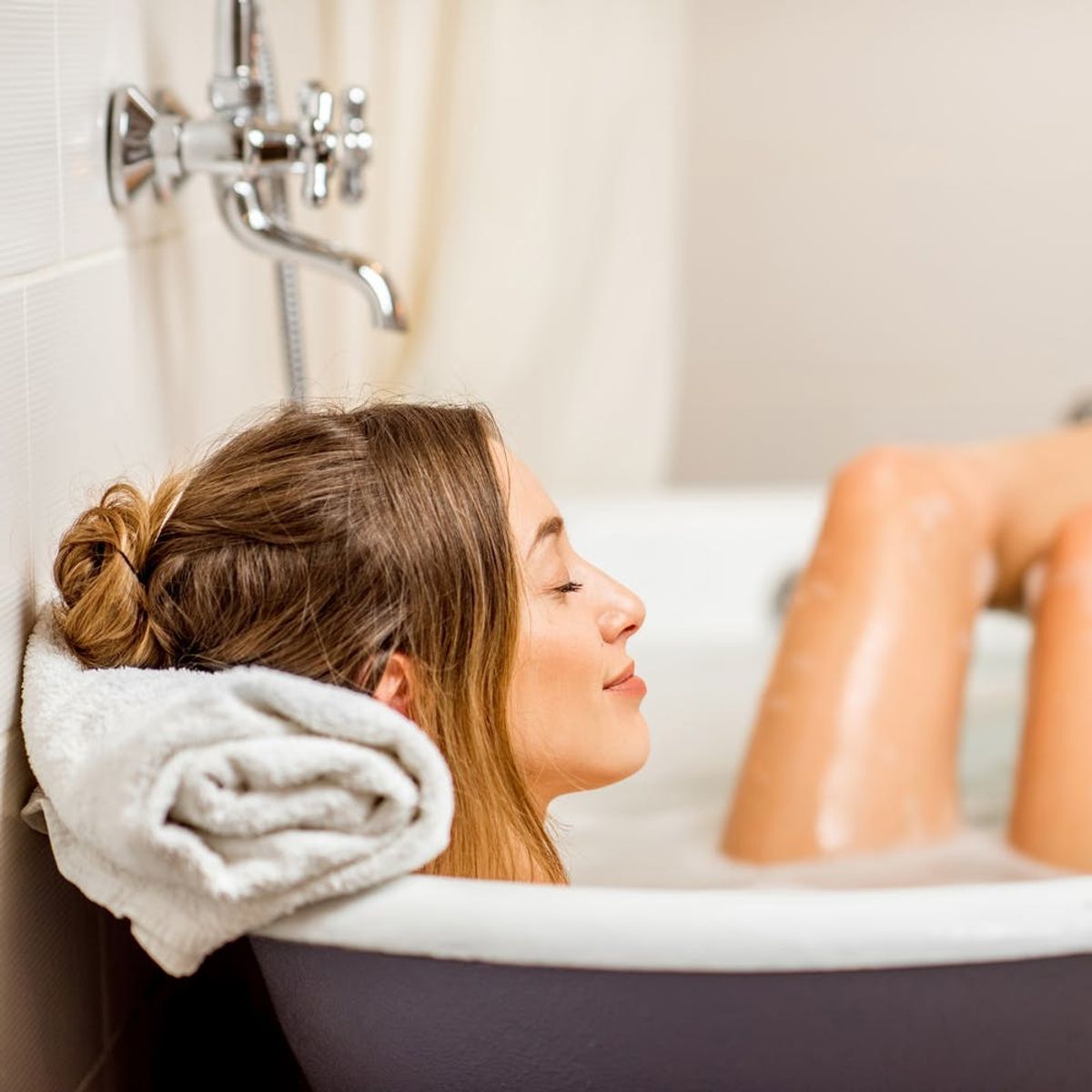Read this before you get your bubbles on.
How to Take the Most Relaxing Bath Ever

There’s nothing more appealing than a warm bath after a long day. While a candle, bestselling book, and a glass of vino can make it even better, the health benefits are what should make it a non-negotiable part of your weekly routine. Bathing soothes irritation associated with dry skin and psoriasis — especially when paired with colloidal oatmeal soaks. And, according to Debra Jaliman, a board-certified dermatologist and assistant professor of dermatology at Icahn School of Medicine at Mount Sinai Hospital in New York City, it also alleviates pent-up stress and anxiety and can promote a better night’s sleep. “When you’re in a warm tub your body temperature rises, and as you get out, it starts to return to normal,” she explains. “This abrupt change prompts the brain to release melatonin, which is a sleep inducer.”
If smooth skin and a solid night’s snooze sound are among your New Year’s resolutions, keep reading for pre- and post-bathing tips (including which products to pour and how long to soak) that will help make the most out of your tub time.
before you hop in the tub
Take a moment to slough away your rough outer layer of skin before sinking into your bath. “Dry brushing is an ancient method for removing dead cells, smoothing skin, and encouraging lymphatic draining, which improves circulation and translates to a glowing body and face,” says esthetician Joie Tavernise of JTav Clinical Skincare. Before you go brushing your bod any which way, Tavernise recommends using long intentional upward strokes toward the heart. “Start at the feet and move up the legs, then continue brushing the hands and up the arms, and finish with light strokes from your belly button up to your chest, where the lymph system drains,” she advises. (Photo via Ian Hooton/Science Photo Library/Getty)
how to decide between bath salts and oils

Consider your bathtime goals when it comes to the quality of your body and mind. Are you trying to remedy aching joints after going too hard at the gym? Or do you want to alleviate stress after a day filled with tight deadlines and overwhelming chaos? If so, try salts. According to Zoraida Bettini, a licensed massage therapist at Bamford Haybarn Spa in Brooklyn, New York, salt hydrotherapy brings down swelling and inflammation, as well as depression and anxiety.
If a relaxing, deeply hydrating soak is more your thing, go for oils or oatmeal. Lavender, vanilla, chamomile, and sage oils are especially calming and will leave you feeling moisturized in mere moments. (Photo via NightAndDayImages/ Getty)
When it’s time to call it quits

Even if you don’t want to put a time limit on your relaxation, Jaliman advises draining the tub after 15 to 30 minutes. “Any more and you can end up with wrinkled fingers and toes,” she says. While that’s no big deal every once in a while, if you soak every day it can lead to some pretty grim skincare concerns. “If you spend way too much time in the water, your skin could break down and begin to shed,” Jaliman says, noting that this can increase your chances of infection since fresh layers of skin are being exposed to dirty bath water. Another no-no is soaking in steaming water. “Scalding hot baths are dehydrating and they may drop your blood pressure, causing you to feel dizzy,” Jaliman warns. To stay on the safe side, draw a lukewarm bath that’s soothing, but not uncomfortably hot, and soak for no more than the allotted time. (Photo via RossHelen/ Getty)
after you get out

As chilly or sleepy as you may feel stepping out of the tub, try to take a moment before making a beeline for your towel and bed. According to Sheila Malek Kassir, global beauty expert and director of Manhattan’s Inside Beauty Medical Spa, immediately toweling off when you get out of the water is doing your skin a disservice. “Instead, apply your favorite cream, butter, or oil and let it mix with the water on your body to [deliver] the ultimate moisture kick,” she suggests. (Photo via Zinkevych/ Getty)
RELATED: How to Make Your Home Feel More Zen



















